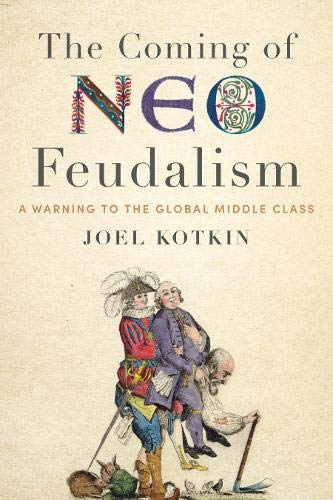If there is a single American development pattern or style that I love most, it is the streetcar suburb. Bringing more of this pattern back to our cities would be a great thing. read more »
Transportation
In Praise of Streetcar Suburbs, Defined and Illustrated
- Login to post comments
Green Policies Won't Keep California Truckin'
No state advertises its green credentials more than California. That these policies often hurt the economy, driving up housing costs and narrowing opportunities for working-class people while not even doing much for the environment, has not discouraged the state’s environmental overlords. read more »
- Login to post comments
America's Long Suffering Rail Commuters
The long, streaking commuter trains (suburban rail) carrying workers mostly into and out of downtown every day may give the impression of “rapid transit.” However, regardless of the top speeds they reach, the average suburban rail rider spends far more time traveling to work than those using other modes of getting to work (Figure 1). They spend far longer than the majority of commuters, who drive alone. Even in the New York combined statistical area (CSA), with the largest suburban rail network a majority drive to work (Figure 2). read more »
High Speed Rail: Yesterday's Tech Tomorrow
One of the candidates for president in this November’s election is known by the nickname, “Amtrak Joe.” The Democratic-controlled House wants to triple federal funding for intercity passenger trains. read more »
- Login to post comments
COVID-19: Improved Ventilation Required in Crowded Enclosures
The New York Times reported on July 4 that 239 scientists in 32 countries had signed an Open Letter to the World Health Organization (WHO) outlining “the evidence showing that smaller particles can infect people, and are calling for the agency to revise its recommendations.” The letter was published in the journal read more »
- Login to post comments
Freeways: The Egalitarian Transportation
In the past month or so, we’ve seen the destruction or defacement of statues of Confederate generals, the Father of our Country who was also a slaveowner, the Great Emancipationist, the read more »
- Login to post comments
May Transit Ridership Down 81 Percent
The nation’s transit systems carried 81 percent fewer riders in May, 2020 than in May, 2019, according to data posted yesterday by the Federal Transit Administration. This drop is almost as great as the 84 percent decline reported for April. read more »
- Login to post comments
What's So Magic About $1 Trillion
News reports say that the Trump Administration is going to propose a $1 trillion infrastructure plan to “boost the economy.” One writer says it will not only promote recovery but also help the environment. read more »
- Login to post comments
The High Speed Rail Authority Has Lost Support of the Legislature for its Proposed Plans
The 12 year saga of the California High Speed Rail Authority and its attempt to build a true high speed train to connect northern and southern California, has been shaken to its core.
At the 4.5 hour Assembly Transportation Committee oversight hearing of May 27th was painted a complete reversal of the unlimited support for the project, which has always been the Democrat caucus position. read more »
- Login to post comments
CARES Funding and Transit
The Coronavirus public health emergency is an existentialist crisis for many sectors of the U.S. economy and government services. The transit industry is one of the most impacted of all.
Transit began losing relevance decades prior to this event. Transit ridership and transportation market share have decreased even as operating costs and taxpayer subsidies increased. Expenditures for major capital projects have reached a billion dollars per mile and more while essential services for transportation-disadvantaged residents have withered away. read more »
- Login to post comments






















